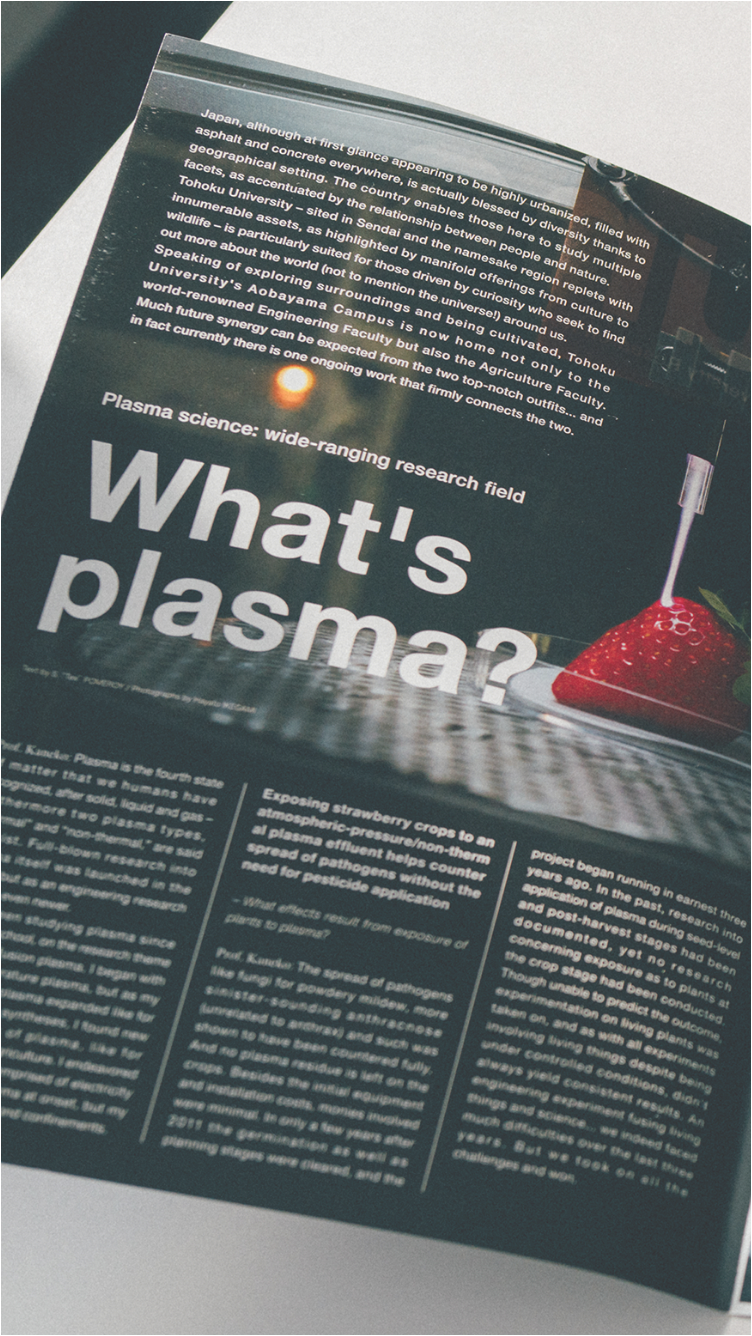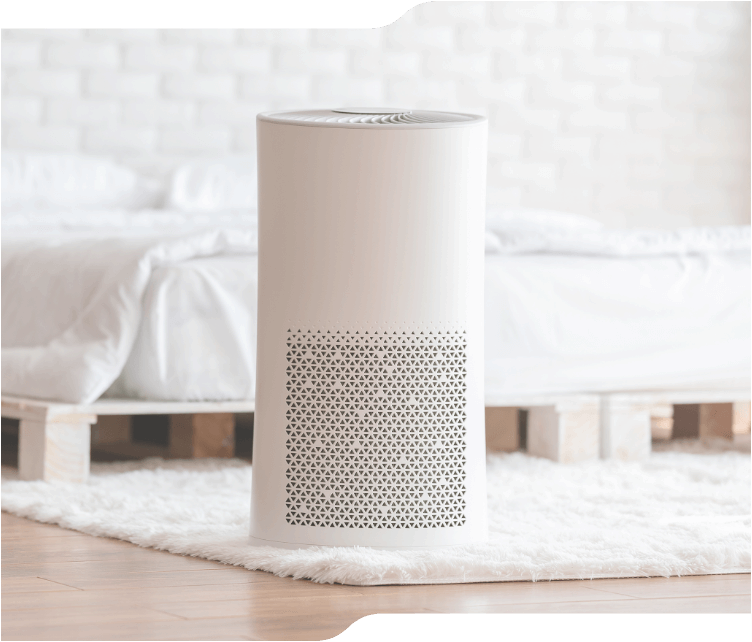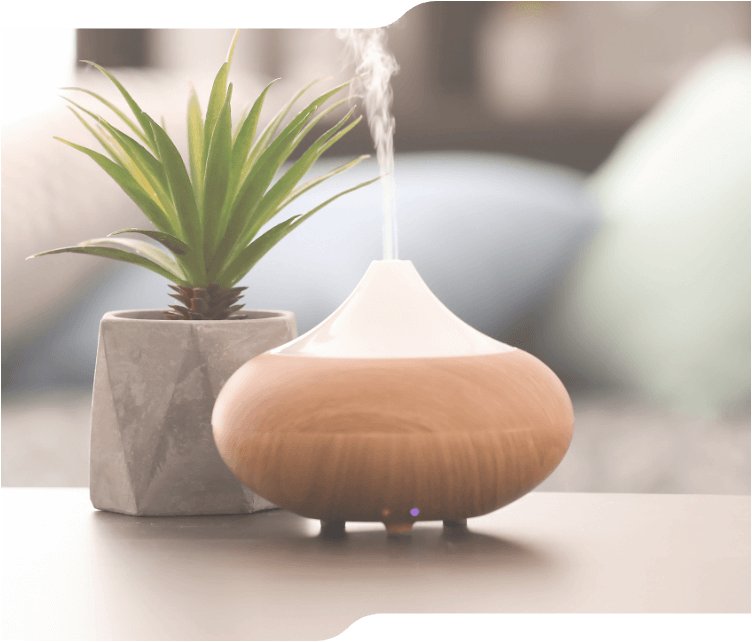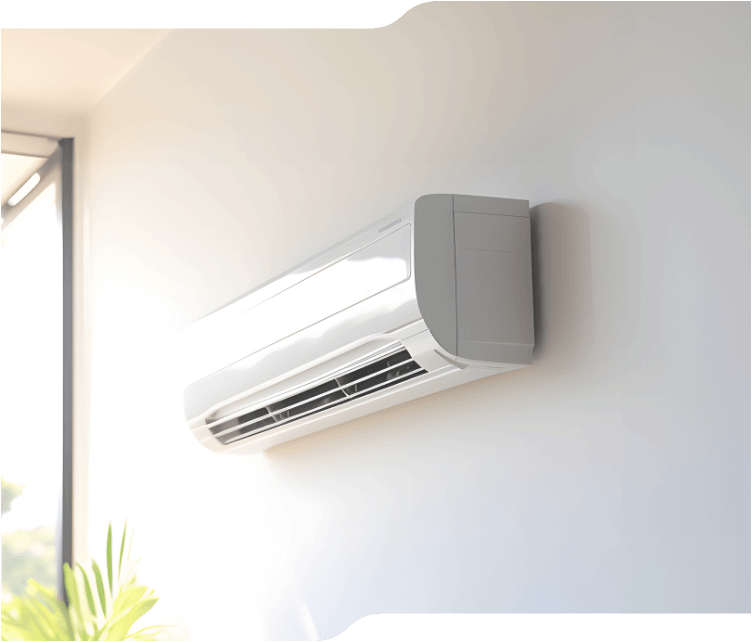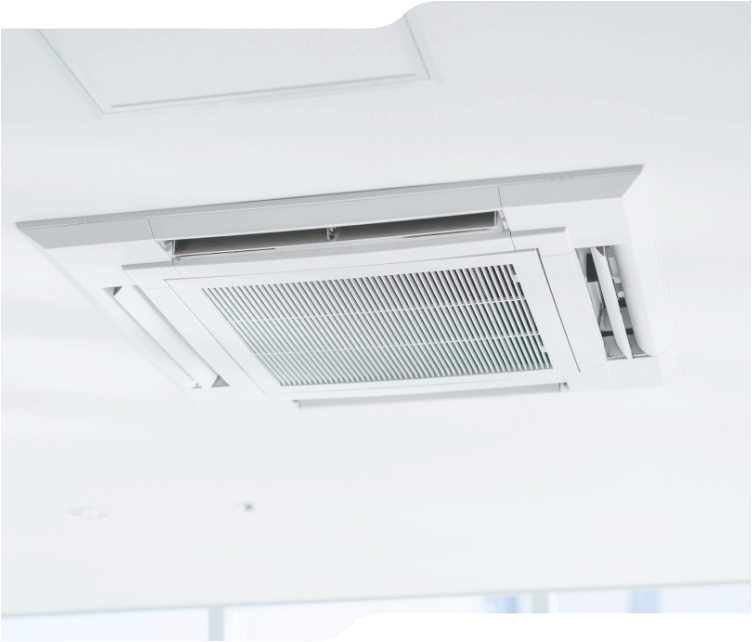
It was developed to reduce the infectivity of
airborne viruses in environments where people are present.
Scroll
Reduces the infectivity of airborne viruses Plasma Micro Mist
Plasma Micro Mist is a human-friendly air purification system created by combining Nalux's microfabrication technology and Tohoku University's non-thermal plasma technology. Clean your space using inexhaustible resources such as water, electricity, and air. The compact module can support a wide range of applications.
Concept
Since 2000, there has been no end to the global epidemic of infectious diseases, including SARS (Severe Acute Respiratory Syndrome) , Ebola Virus Disease, Middle East Respiratory Syndrome (MARS), and the novel coronavirus disease (COVID-19). There are concerns that new infectious diseases will emerge in the future, and there is an urgent need to quickly establish virus inactivation technology. Ozone and hypochlorous acid, which are often considered for inactivating viruses in the environment, have restrictions on the environment in which they can be used due to their effects on the human body. Therefore, NALUX conducted research and development with the aim of reducing the infectivity of airborne viruses in environments where people are present.
Technology
It is safe even in environments where people are present, thanks to plasma technology that uses electricity to generate short-lived peroxynitrous acid (HOONO), which has sterilizing properties, from air and water on the spot without using chemical reagents. We have created an inactivation system that can be used as
Features
Features of Plasma Micro Mist technology
-
01
Plasma
The sun, the solar wind, lightning, and aurora. These are made of a substance called "plasma". Plasma, an ionized gas, is the fourth state of matter after solids, liquids, and gases, and it can be said to be the origin of life, accounting for more than 99% of the matter in the universe. They are indispensable to our daily lives.

-
02
Plasma Micro Mist
H2O2 + HNO2 + H+ → HOONO + H2O + H+
HOONO + organic matter (bacteria, viruses, odorous substances) → inactivated matter, decomposed matter
HOONO ⇄ OH + NO2
OH + organic matter (bacteria, viruses, odor substances) → inactivated products, decomposed products
HOONO ⇒NO3- + H+By exposing a micron-sized fine mist to a special air plasma, an inactivating factor called peroxynitrous acid (HOONO) is produced in the mist. This plasma micro mist generator activates the mist while precisely controlling special plasma to produce the necessary amount of hydrogen peroxide (H2O2) and nitrous acid (HNO2) , which are the raw materials for HOONO. HOONO is continuously produced until the raw material is depleted, and eventually transforms into nitrate ions (NO3-), which are safe for the human body. In this way, we achieved a plasma micromist that has temporary reactivity. Furthermore, this device assists in the above-mentioned sterilization and deodorization effects by releasing ozone−water clusters [O3・(H2O)n].
-
03
Inactivation mechanism
HOONO in the plasma micro mist is expected to contribute to the denaturation of the coronavirus spike protein and to permeate the membrane and degrade internal RNA. HOONO is in a state of chemical equilibrium with the more reactive OH radicals and NO2 radicals, so these radicals can be delivered to the inside of the target, resulting in efficient inactivation.
-
04
Environmental and human safety
- Clean generation
- A clean technology that continuously produces HOONO, a useful reactive species, from water, electricity, and air.
- Gentle on the human body
- HOONO is heat sensitive and decomposes quickly at body temperature. Therefore, decomposition is predominant on the surface and inside the organism, and it is quickly converted to safe nitrate ions. ※Nitrate is used as a food additive.
- Low ozone emission
- We aim to achieve greater effectiveness at lower (O3) density with ozone−water clusters [O3・(H2O)n] , which is predicted to be much more effective than ozone (O3) alone. In addition, since the technology does not rely solely on O3, it can clean the space very effectively while reducing ozone emissions.
| Method | Inactivating factors and mechanisms | Merit | Demerit | Range | Unmanned space | Someone's space | Anti-things | Running cost | Maintainability |
|---|---|---|---|---|---|---|---|---|---|
| Plasma Micro Mist | Peroxynitrous acid and ozone−water clusters | Wide range High immediate effect Low residue toxicity Maintenance-free |
― | ○ Wide range |
○ | ○ | ○ | ○ | ○ |
| Cluster ion | OH radical generation on the cell membrane surface | You don't use drugs Maintenance-free |
Relatively low inactivation effect This is the effect of cluster ions. Almost no scientific evidence |
△ Depends on flow rate |
△ Less effective |
△ Less effective |
× | ○ | ○ |
| UV | DNA damage | High immediate effect You don't use drugs |
Effectiveness attenuates depending on irradiation distance It has no effect on areas that are in shadow. Requires regular lamp replacement There are restrictions on use for humans. |
△ *No effect on shadow areas, Effect diminishes with distance |
○ | × | △ *Resin products deteriorate |
× Replacement light source is expensive |
△ Requires regular lamp replacement |
| Ozone | Oxidation by O3 *Not effective against some viruses |
Wide range You don't use drugs |
Less effective if not in a high humidity environment Restricted for use in manned environments *0.1 ppm or less Corrodes rubber and steel |
○ *Effectiveness is low unless under high humidity. |
○ | △ *Usage restrictions (< 0.1 ppm) |
△ *Rubber and iron corrode |
○ | ○ |
| Ozone water mist | Oxidation by O3 *Not effective against some viruses |
The amount generated can be lower than that of gaseous ozone. You don't use drugs |
Targeting objects, not spaces If you create a fine mist that floats around the space, ozone will immediately escape into the gas phase. Periodic maintenance is required for liquid phase ozone generators | × Object only |
× Object only |
× Object only |
○ | ○ | △ Generator requires regular maintenance |
| HEPA Carbon filter |
Collected by filter | You don't use drugs | Filter needs to be replaced Depends on suction power and filter density Bacteria and harmful substances accumulate in the filter |
△ Depends on flow rate |
○ | ○ | × | △ Filter cost |
△ Replace filters regularly |
| photocatalyst | DNA damage and protein degradation due to photocatalytic reaction | You don't use drugs High maintenance |
Effective range is narrow High initial cost Accumulation of harmful substances |
△ Depends on flow rate |
○ | ○ | × | × | △ Regular maintenance required |
*Inactivation ability depends on the specifications of each product.
Tohoku University technology
Plasma technology at Tohoku University


Interview
Tohoku University Professor Toshiro Kaneko
Use Cases
By incorporating the Plasma Micro Mist module, you can utilize the clean technology of Plasma Micro Mist.
Plasma Micro Mist technology can not only be used in a variety of products, but because it has no effect on the human body, it is intended to be used in a variety of situations, from medical settings to businesses and homes.
- Medical Practice
- Nursing Home
- Nursery School
- Inside a car, etc.
- Traffic Infrastructure
- Home
- Factory
- Agricultural Field
(Livestock and horticulture)
System Configuration

Evidence
Test Result
In a new coronavirus inactivation test conducted in collaboration with Professor Hayasaka of Yamaguchi University's Faculty of Veterinary Medicine, we achieved a reduction in virus infectivity of over 99.78% with plasma micro mist treatment for 10 minutes. *Uses Omicron strain
Experimental results
Virus/deodorization test
-
01
SARS-CoV-2 (BA.2)
Efficacy verification using floating new coronavirus
Demonstrated reduction of viral infection titer by over 99% in 10 minutes
*Test space: 1m3、Test method: Plaque assay -
02
influenza
Efficacy verification using airborne influenza virus
Demonstrates reduction of viral infection titer by over 99.9% in 30 minutes
*Test space: 28m3, Test method: TCID50 assay -
03
Methyl mercaptan
Reduced from 0.03 ppm to less than 0.0001 ppm in 60 minutes
*Test space: 1m3, quantitative method: low temperature concentration/gas chromatography -
04
Hydrogen sulfide
Decreased from 0.59 ppm to 0.064 ppm in 120 minutes /
*Test space: 1m3, quantitative method: low temperature concentration/gas chromatography -
05
Strawberry Anthrax
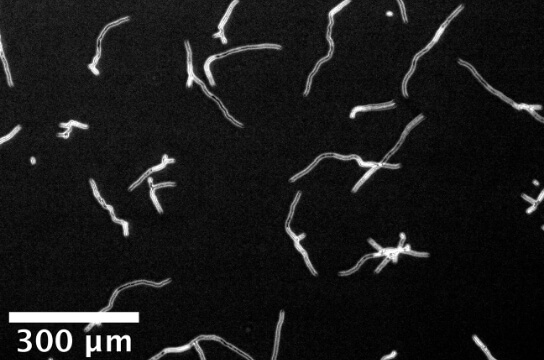
Untreated

Plasma Micro Mist
Germination rate reduced to almost 0% with 30 minutes treatment *1 Add 10 μL of plasma micromist solution to 50 μL of bacterial solution (~107 conidia/mL) *2 Measure germination rate 8 to 10 hours after treatment
Plasma Micro Mist This is a unique technology exclusive to Tohoku University and Nalux.
Plasma Micro Mist is a human-friendly system that reduces the infectivity of viruses, created by combining Nalux's microfabrication technology and Tohoku University's non-thermal plasma technology. Clean your space using inexhaustible resources such as water, electricity, and air. The compact module can support a wide range of applications.
-
Plasma Micro Mist is patented.
[Patent number] Patent No. 7361324 (P7361324( [Registration date] October 5, 2023 (2023.10.5) [Issuance date] October 16, 2023 (2023.10.16) [Name of the invention] Spraying device and spraying method [Patent holder] Nalux Co., Ltd./Tohoku University, National University Corporation
-
Selected as JST A-STEP industry-university joint (full-scale) project.
Selected for the 2021 JST (Japan Science and Technology Agency) A-STEP industry-academia collaboration (full-scale) project. This project aims to refine the basic research results of universities and other institutions to the point where they can be connected to joint research with companies, and to build a joint research system to solve social issues.
Company
Nalux Holdings Co.,Ltd.
Nalux Co.,Ltd.
Armed with world-class optical design, nano-level microfabrication, and smart production systems, we supply high-value-added optical components to a wide range of industrial fields, including optical communications, automobiles, industrial equipment/office equipment, and healthcare.
| Company Name | Nalux Holdings Co.,Ltd. Nalux Co.,Ltd. |
|---|---|
| Head Office | 2-1-7, Yamazaki, Shimamoto-cho, Mishima-gun, Osaka, 618-0001, Japan |
| TEL | 075-963-3456 |
| FAX | 075-963-3450 |
| Representative | Seiichiro Kitagawa, CEO |
| Establishment | 1930 |
| Founding | July 1948 |
| Capital | Nalux non-consolidated: 80 million yen Group total: 218.26 million yen |
| Annual Sales |
7.34 billion yen (group total as of March 31, 2023) Member of Higashiyodogawa Yodo Yuukai (association of superior corporations) from 1986 to 2021. Joined Ibaraki Superior Declaration Corporation Association in June 2022 (withdrew from Higashiyodogawa Yodo Yuukai due to change of head office address) Courtesy visit: November 2021 from the local tax office as an excellent taxpayer *Courtesy visit: November 2021 from the local tax office as an excellent tax return filing corporation |
| Number of Employees | (as of March 31, 2023) Nalux non-consolidated: 302 Nalux Group total: 391 |
| Main Banks | Bank of Mitsubishi UFJ, Tenroku Branch; Bank of Kyoto, Yamazaki Branch |
Contact
Please feel free to contact us for a quote and consultation.
Inquiry Form


